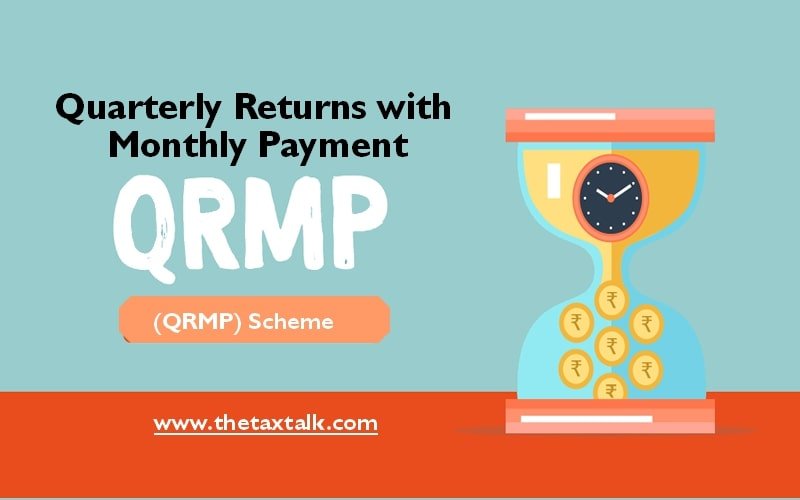![]()
Quarterly Returns with Monthly Payment (QRMP) Scheme
The Central Board of Indirect Taxes & Customs (CBIC) introduced Quarterly Return Filing and Monthly Payment of Taxes (QRMP) scheme under Goods and Services Tax (GST) to help the taxpayers having turnover less than Rs. 5 crores. The QRMP scheme allows the taxpayers to file GSTR-3B on a quarterly basis and pay tax every month.
The scheme had various benefits, however the following disadvantages made it an incompetent solution for the various problems faced by the taxpayers:
- Invoice Furnishing Facility:
The Invoice Furnishing Facility (IFF) is a facility where quarterly GSTR-1 filers can choose to upload their Business-to-business (B2B) invoices every month, so that the recipient can take input tax credit monthly.
However, the segregation of the documents as B2B and non-B2B in order to avail such facility becomes a lengthy process and, the reconciliation between IFF, sales register and GSTR-1 becomes more essential. Further, the taxpayer under QRMP scheme must choose between two methods for tax payment every month, i.e. Fixed Sum Method and Self-assessment Method. So, the whole process becomes more cumbersome and time consuming, rather than easy flowing and time saving.
There will be a necessity to keep track of details mentioned in IFF for the first two months of the quarter during the filing the quarterly GSTR 1.
- Monthly Payment of Tax :
The most significant feature of the scheme was that the taxpayer was allowed to file the return quarterly, hence, expecting less compliance burden for small taxpayers. But at the same time, tax has to be deposited monthly, after calculating the liability either through Fixed Sum Method or Self Assessment Method. Therefore, only filing the return and formality of OTP or DSC can be postponed.
The workload for GST professionals / accountants have increased due to IFF and new tax calculation and payment methods.
- Difficult to understand:
This scheme is difficult to understand for a registered person. Different and difficult methods for self assessment of taxes and keeping a record of IFFs, etc will burden small businessmen.
Different methods of tax calculation will bring more confusion in calculating taxes every month.
If fixed sum method is followed for cash payment, there can be scenarios wherein relevant quarter’s cash liability is considerably lesser than the previous quarter’s net cash payment. In such scenarios, excess cash may remain deposited and this will lead to blocking of taxpayer’s working capital.
- Eligibility and Default Option:
Taxpayer cannot take action (Change the profile) for two consecutive quarters. The option selected in the current quarter will be set as the default option for the subsequent quarters.
This scheme is only available to those who are liable to file GSTR-1 and GSTR-3B returns. Therefore, taxpayers who are not required to file GSTR 1 and GSTR 3B will not be able to avail the benefit of this scheme. Also, taxpayers having turnover more than 5 cores, even if they have a few bills, will also be ineligible, therefore large taxpayers will have to file their return monthly, just like before.
If any taxpayer’s aggregate turnover for FY 2019-20 is up to Rs. 5 Crore and they have filed their FORM GSTR3B for the month of October 2020 by 30th November 2020, they may be added to the scheme by the system on default.
Only B2B bills are reflected in IFFs, therefore chances of B2C bills being missed, or confusion and double recording of bills increases.


